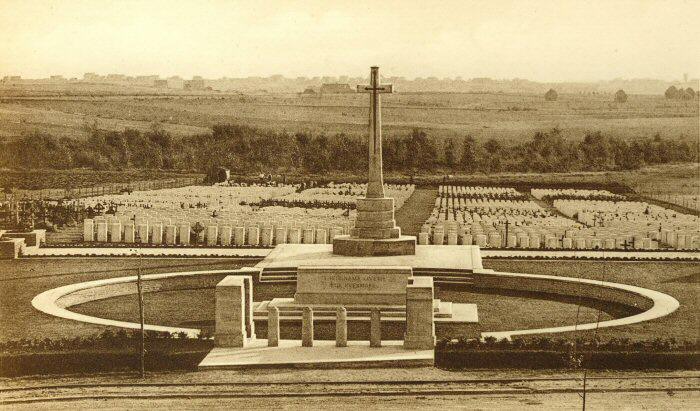Buried Alive or Burned, Many Die in Fight for Mine Crater
Special to The Great War Project
(26-28 July) Despite the deadlock on the “quiet” Western Front, there are still occasional savage clashes. Some 300 soldiers die each day.
One attack of particular note is the battle in southern Belgium for the Hooge Crater.
It takes five and a half weeks of digging before the British can lay a mine near the town of Hooge (pronounced HOO-J). As they dig one tunnel collapses, and a second has to be excavated.
The crater, reports historian Martin Gilbert, is the result of a huge mine explosion that precedes a British attack on German trenches. After the explosion, the crater left is 120 feet wide and twenty feet deep.
Among the casualties, at least ten British soldiers die when they are hit by debris from the explosion.
“Ferocious struggles took place between the confronting armies,” reports Gilbert.
“A crater such as this was a prized objective,” observes Gilbert, “giving as it did an element of shelter to the troops whose army captured it, and a relatively protected spot from which to fire on the enemy.”
The Germans use extraordinary means to prevent the British from seizing the crater.
“The Germans made use of their dreaded heavy mortar shell,” according to Gilbert, “known to the British as ‘Minnie’ or ‘Moaning Minnie.’”
“This was the most alarming frightfulness that our fellows had as yet knocked up against,” writes one British officer present during the attack. “Apart from the number of people it had blown to bits, the explosions were so terrific that anyone within a hundred yards’ radius was liable to lose his reason after a few hours.”
According to this officer, several men “had to be sent down the line in a state of gibbering helplessness.”
Making matters worse, according to Gilbert, none of the men involved in this attack and others nearby had fought in that part of the front line before. It is unfamiliar ground.
A day later the Germans unleash a nighttime surprise attack, using flamethrowers on the British attackers. “There was a sudden hissing found,” recalls one British officer, “and a bright crimson glare over the crater turned the whole scene red. As I looked I saw three or four distinct jets of flame – like a line of powerful fire-hoses spraying fire instead of water – shoot across my fire trench.”
The men caught in the blast of this fire, reports Gilbert, “were never seen again.”
Despite the horror of this scene, British commanders order another attack on the same German trenches. The order is incomprehensible to British soldiers on the line.
“It is only charitable to assume,” writes the same officer with uncommon restraint, “that the staff, from their position fifteen miles back, were imperfectly informed of the real position.
“At 3 o-clock the four battalions duly went over the top and were swept out of existence by an enemy whose machine guns there had been no time to locate, and on whom our meager artillery preparation had made no impression.
“Many of the men were caught on our own wire, and I believe that none got more than fifty yards beyond the edge of the wood.”
After the war, a cemetery and memorial will be built at Hooge. Nearly 6,000 are buried there. Some 3,500 cannot be identified.



